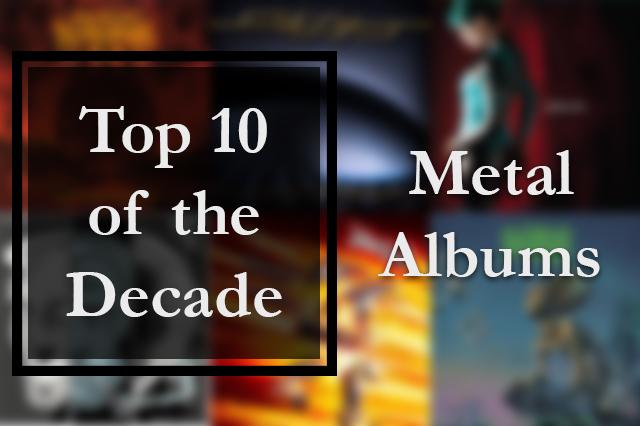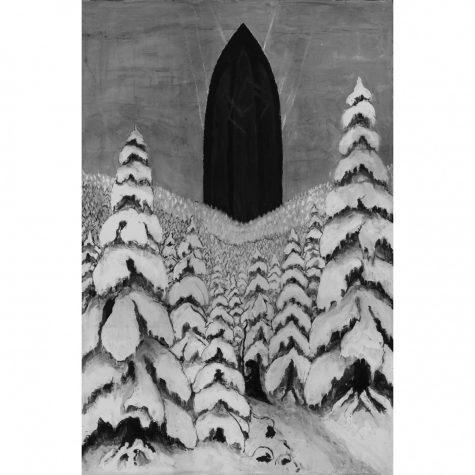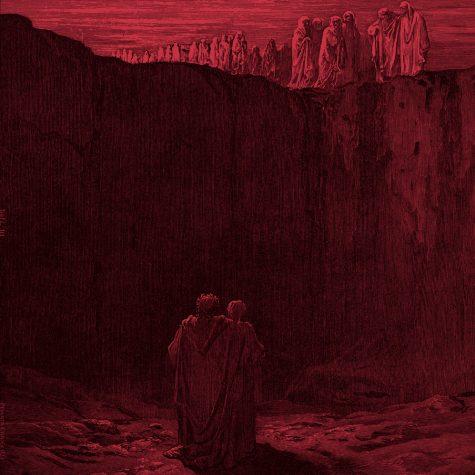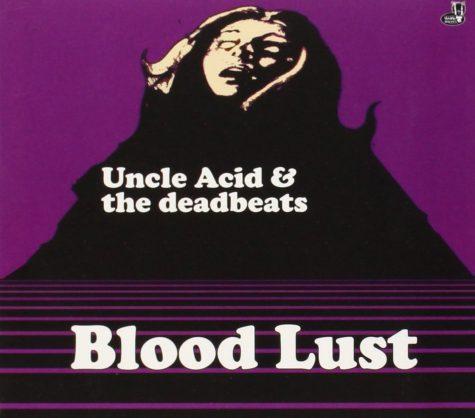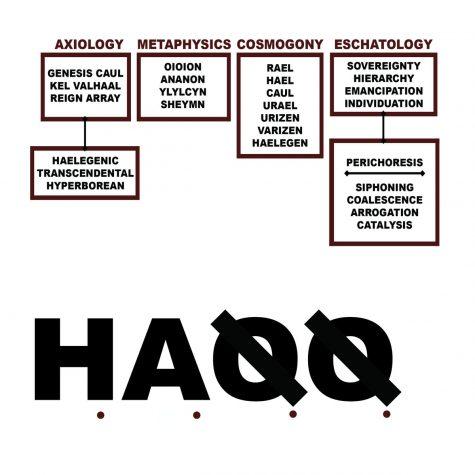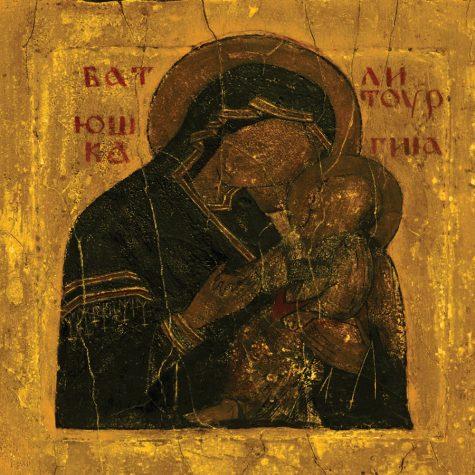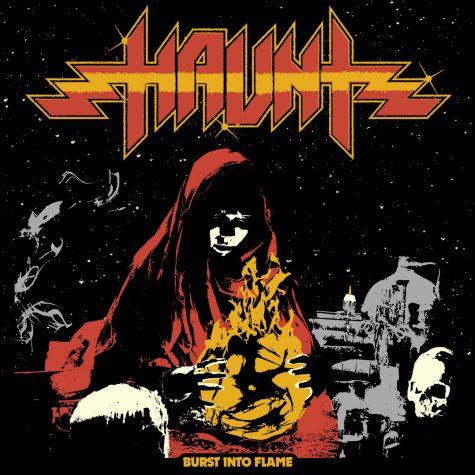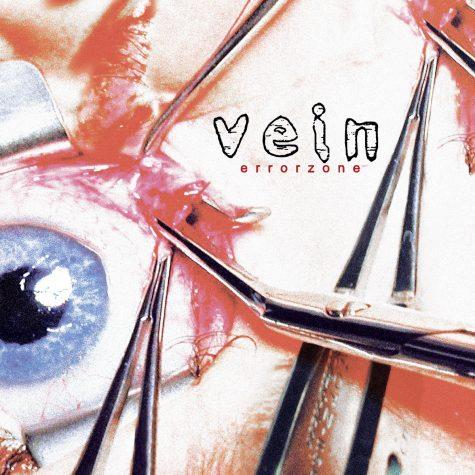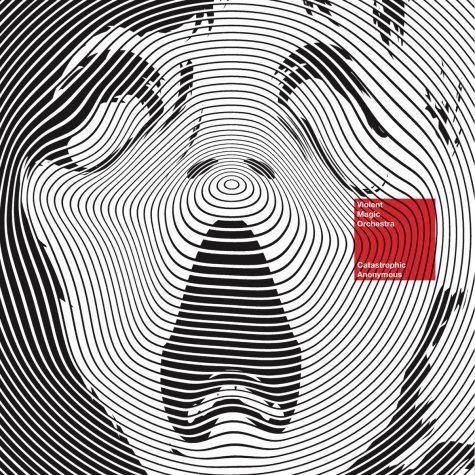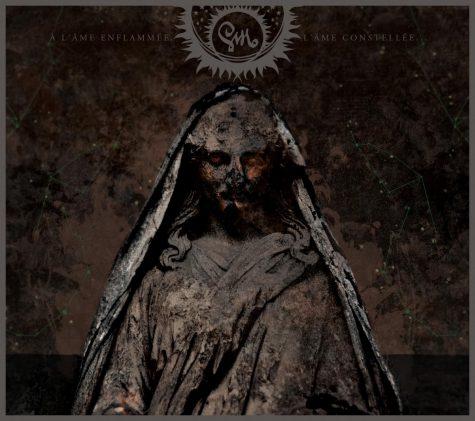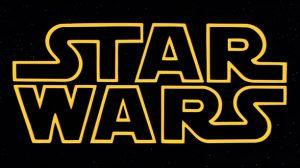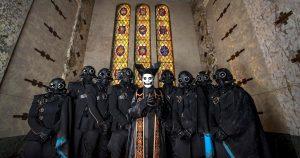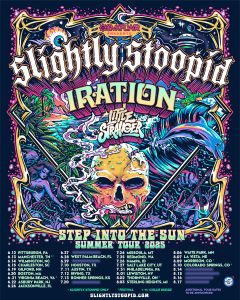Top 10 Metal albums of the 2010s
The most intense side of a musical decade
January 5, 2020
Metal has had a decade as powerful as ever, with more detail and widespread influence than ever before. Traditional Heavy Metal has seen a resurgence unlike anything since the early 90s, Black Metal has become a source of innovation in all directions, and Metalcore has gone back to its roots and become more “tough guy” than ever.
Metal’s longevity, persistence, and continuing innovation can likely be attributed to its nature of rejecting the mainstream, with Nu Metal and Glam Metal being the only subgenres to receive massive airplay. Whatever the case, there have been a multitude of memorable and powerful artistic works classified under the genre throughout the 2010s, boasting a variety of emotion through the use of dark, heavy music.
10. Paysage d’Hiver – “Das Tor” (2013)
Paysage d’Hiver is arguably one of the greatest and most influential Black Metal acts of all time, utilizing incredibly lo-fi production, high-speed, treble heavy riffage, atmospheric, ambient synths and recordings of the wind to create an unmatched, freezing-cold atmosphere. Where all of this one-man project’s releases have undoubtedly achieved that goal of creating ice cold Black Metal that thrives using atmospheric qualities, it’s often recognized that the self-titled “Paysage d’Hiver” is his greatest record. It’s got much more clear aggression bleeding through the sound, clearly inspired by Darkthrone’s “Transylvanian Hunger,” and it clocks in at only fifty-one minutes, where most of his albums come out at seventy minutes or more, making it an easy access point and a cohesive listen.
As the albums became more and more focused on the sound of a desolate, lonely landscape than a more recognizable place, releases ranged in quality between good and great, but never quite reached the high emotions of that first album. I was under the impression that reaching that level of quality meant dialing more of the original Black Metal scene into it again. Boy, was I wrong.
“Das Tor” is a portrait of a depressing, lonely, and strangely beautiful scene of winter at the blackest night. Across only four tracks, the album is a whole eighty minutes of immersive sound, having peaks and valleys in how intense and loud it is, but never getting quiet enough to stop surrounding you. Unlike most metal albums of similar intention that attempt to resemble a season or temperature, “Das Tor” has a way of playing into emotions.
The music sounds like a mourning forest, paired with crying wind, soft at some times, and howling at others. The emotional peaks when the songs crescendo out of synths and field recordings with piercing riffs and intense blast beats make it sound even more aggressive than the debut album. Even if Atmospheric Black isn’t your thing, find a good winter night and give this a spin. You may feel the strange emotional pull in the immersion that I did.
9. Hell – “Hell III” (2012)
The first two Hell projects were pleasing and thought-provoking, but neither came nearly as close to perfection as “Hell III.” It consists of just two tracks, clocking in at a total of thirty-seven minutes, filled with sounds across a multitude of Rock and Metal genres to create beautiful jams that could soundtrack Dante’s Inferno.
Throughout these primarily instrumental passages with minimal vocal sections (all of which don’t have a set track of lyrics), a plethora of negative feelings and themes like grief, sadness, anger, hatred, mourning, loss, and overall suffering in such an artistic way that, within the first few seconds of the album, its beauty radiates through.
The structure of the album is based in crescendos into more powerful soundscapes and falls back into near silence to build back up again, but rather than feeling like a build up to the good part, every part of the journey is one to treasure. The dual guitars and bass playing carefully planned, beautiful melodies that on their own, can move you to an emotional place far away from where you may be listening to this album, and when the drums and vocals come in, you can feel the lonesome instruments from the build-up overcome by feelings of hatred and agony to such great extremes that it feels like a power.
Despite the horrible connotation of what such emotions could do to you as the listener, there is never a time throughout the album’s short duration that the feelings are too overpowering or exhausting. It feels like a natural traverse of emotional energy unlike almost any other album. If you like Doom Metal, Post-Rock, Psych Rock, atmospheric music in general, or you just want to see what all of my fuss is about, I highly recommend this album.
8. Uncle Acid and the Deadbeats – “Blood Lust” (2011)
“Blood Lust” is an album that feels forty years older than it is, and I mean that in the best way. It’s like a follow-up to “Paranoid” if Black Sabbath got John Lennon as a vocalist and they were tasked with making a soundtrack to the greatest B-horror movie ever created.
Psych Rock fuzz and Iommi styled, memorable riffs paired with distorted, Brit-sounding, tenor range vocals bring forth a feeling akin to the underlying fears of Satan behind those outside of the psychedelic and hippie movement. The purposefully lo-fi production also makes it seem as though it were a dark relic of the bygone era, giving it a much more sinister, dark atmosphere.
Songs like, “Death’s Door,” “13 Candles” and “Withered Hand of Evil” feel perfect for a Manson Family documentary. Beyond the novelty of sounding like it’s from a different decade, each song on this is heavy as Psych comes, and is perfect, especially compared to most of the other picks I’ve made here, to show to a wider group of people.
This album shows off some of the best things that can be done with Trad Doom Metal and Hard Rock in the modern day, and if you like Black Sabbath (as any sensible person does), this isn’t a record to pass up. At the least, give a song a try when you’re looking to headbang with the boys.
7. Liturgy – “H.A.Q.Q.” (2019)
In the past, I had dismissed Liturgy as being overly pretentious, particularly due to the philosophy describing the sound its frontman, Hunter Hunt-Hendrix, makes known. Their prior album, “The Ark Work,” left me feeling hopeless that they would ever release a truly incredible release.
Imagine how shocked I was when I heard “H.A.Q.Q.” Each song functions as a bizarre combination between the atmospheric, complex No Wave style of Glenn Branca, Modern Classical music, Black Metal, math-y Progressive Rock like The Mars Volta, and Glitch music. This seamless merging of styles and genres brings a brilliant take on Post-Metal that breaks from the confines of either sounding like Neurosis, Tool, or Deafheaven.
The lyrics are hard to interpret, being deeply cryptic, but given the background, they undoubtedly preach musical transcendence and spiritual ascension. If that’s not quite your style, what will undoubtedly keep you there is the remarkably unique music, constantly floating between rhythm, melody and dissonance to create an unforgettable balance that achieves the extreme ends of each in a way that still meshes together wonderfully while contrasting greatly.
I think it can be noted that opposed to many other weirdo Metal albums that have come out lately, the Classical music sections actually manage to be executed too well even, sounding genuine, even if they’re truly the sound of a VST. If you’ve got an interest in extreme Metal that brings together both Progressive and Punk to make a powerful artistic stance, I highly recommend you take a listen to one of the greatest musical surprises I’ve ever been blessed with hearing.
6. Batushka – “Litourgiya” (2015)
“Litourgiya” is an album that stands on its own in Black Metal. Where influences outside of the scene itself generally come from Nordic Folk, Western Classical and synth-oriented Ambient music, Batushka decided they’d mold their own style. Combining well-written, heavy riffage and the standard intense blastbeats with a heavy dosage of Russian Classical and Byzantine Chants, they bring a unique Eastern European take on the genre.
Despite being from a genre known for being intensely Satanic, each of the songs is titled “Litany” followed by a number. All of the lyrics, written in the dead language, Old Church Slavonic, are reinterpretations of Bible passages that hold the original meanings. They don’t attempt to twist the words into something different and more sinister and they don’t make criticisms of the text.
Despite this, it presents these seemingly religious pieces as high speed Black Metal with shrieked vocals, dark riffs, and ominous, looming, judging atmosphere created by the usage of Polyphonic Chants behind the sound of music commonly associated with Church burning and occult connections.
Some have argued this to simply be a one-trick-pony gimmick, but if that’s what you call it, it’s sure as hell one of the greatest tricks any pony has ever performed. The drama within the band throughout 2019 lead to this album getting a somewhat proper follow-up, “Panihida,” but it didn’t feel nearly as impactful as this debut powerhouse of an album.
5. Haunt – “Burst Into Flame” (2018)
Trevor William Church is possibly one of the most prolific Metal artists of the 2010s that’s consistently released quality material. He caught my attention with his band Beastmaker back in 2018 after seeing them consistently on Bandcamp, due to their making ten whole EPs in one year.
As impressive as that might be, his other band, Haunt, released a single nine track album that left a much stronger impact on me than any of those. Had this record been released at the peak of the NWOBHM back in the early 80s, Haunt would have been mentioned in the same sentences as Dio, Judas Priest, Iron Maiden, Satan, and Angel Witch.
Each track is anthemic, well-written and creates an atmosphere between genuine darkness and straight-forward fun. The vocals do lack power in the production here and there, but the catchy lyrics makes them all the better, as well as the occasional backing vocals to give them the boost they need to get to make some nearly perfect headbanging material.
Additionally, the vocals, as well as the production choices and the riffage, guarantees the songs can vibe with the NWOBHM crowd while still sounding individual and unique alongside contemporaries that try their hardest to sound like Iron Maiden. “Burst Into Flame” is the Heavy Metal revival album we needed, showing influence from artists all over the era, and never quite settling totally with one sound, but flowing naturally nonetheless. It’s no Powerslave, but if you’ve got a kick for that traditional Metal sound, this will more than hit the spot.
4. Vein – Errorzone (2018)
By combining two genres that are primarily loathed in many Metal circles, Metalcore and Nu Metal, “Errorzone” thrives in a strange spot between the two. It harkens back to the early days of the genres back in the mid-90s, before there was any Bring Me the Horizon, Suicide Silence, or Limp Bizkit. Instead, it takes all of the best qualities of those genres and the records that influenced them.
It’s catchy, complex, has great grooves, aggressive, shrill vocals, fast tempo and great dynamics that would drive a mosh wild in an instant. It paints a picture akin to a more chaotic version of The Matrix, with each track having a computer themed title, as well as Breakbeat samples sprinkled on some of the tracks to give it the most 90s aggressive technology vibe imaginable.
The chaos is heightened by using incredibly dissonant guitar sounds, paired up with heavy inspiration from Metalcore’s complex cousin, Mathcore, by having signature changes each song and complex riffage in between the grooving madness. Vein never slows down even for an instant, which could be exhausting if this were any longer, but clocking in at twenty-nine minutes makes this feel all the more impactful.
Even if you’re not too fond of either primary genres, “Errorzone” takes the best qualities of both and plays them with incredible energy. Even if all of that sounds too exhausting for you, tracks like, “Doomtech,” make every detestable piece of music to come out of either genre worth it.
3. Violent Magic Orchestra – Catastrophic Anonymous (2016)
“Catastrophic Anonymous” offers one of the most unique takes on Metal as a whole I’ve ever heard, and after hearing that the band is made up of a Noise artist, an Industrial Techno artist, and a bizarre Japanese Black Metal band, it’s not as surprising.
Using distorted digital drums, atmospheric guitar feedback, swelling synths and pads, as well as manically shrieked vocals and speaker busting riffs, this album manages to capture all of the wide array of its influences quite nicely. Among the eclectic collection of sounds to be found in the album’s duration are Black Metal, Post-Rock, Drone, Industrial Techno, Power Noise, and IDM.
It’s definitely not an album to be listened to in the background, either. There are many details throughout its thirty-four minute runtime that prove significantly more emotionally rewarding from concentration and focus. Its eclectic nature and cover would make it seem as though it’s an album consumed by chaos, and that would be partially correct, but it’s chaos with a motive, and that helps form a beautiful, cathartic experience.
Additionally, there’s very careful structure in the songs, using moments of peace, silence, or build-up to make sure the moments of true destruction are greater. Despite the album’s unique qualities, and all of the noteworthy artists that perform on the album (Pete Swanson of Yellow Swans, Chip King of The Body, Attila from Mayhem), it never seemed to pick up any buzz in the community, to my dismay. Hopefully many will see what a favor time will do to this album and its delicate but destructive sound, as if it were a tornado made of glass.
2. Vektor – Outer Isolation (2011) 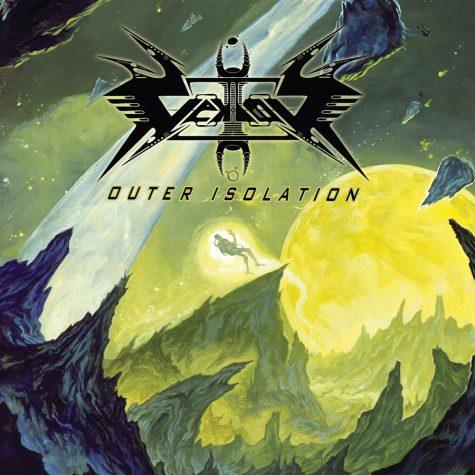
Vektor is one Thrash Metal band you can’t help but hear about this decade, and for good reason. There aren’t many Thrash bands out there that don’t make a great attempt to sound like any of the “Big Four,” and even when they do, they’re so far differentiated that it’s absurd. Their style is like a wonderful amalgamation of some of the greatest Metal bands of all time, including Slayer, Voivod, Opeth, Emperor, Coroner, and Sadus. Even then, I’m not confident I can pinpoint what this sound is using other bands for examples.
“Outer Isolation” is the second of their three popular albums, acting almost as a middle ground between where their Black Metal and Progressive Metal undertones declare dominance. Though “Black Future” is some of their most raw sounding material and “Terminal Redux” shows much greater playing ability than they ever had before, I find myself enjoying Outer Isolation the most, not only due to where it stands in their discography, but because of how well it uses the time it takes up.
There isn’t a point of low energy on the entire record, and the tempo never goes below 130 BPM in the entire fifty-one minute runtime. It starts at an energetic high with “Cosmic Cortex” and ends even higher with “Outer Isolation” tying together a masterful Tech Thrash performance unlike any other band ever has.
The guitar playing is tremolo picked to perfection, flying all over the neck, and tying everything together with oddly catchy riffs, the drumming has such force and speed to it, it sounds almost like electronic drums, and the vocals absolutely can’t go without mentioning, sounding like if some horrifying alien sang, which is very fitting with the overarching science fiction themes and heavy emphasis on space.
On top of all of the praise I can give this for being composed incredibly well, it’s important to note that despite the constant time signature changes, it’s a headbanger for sure and can fill you up with the most satisfying feelings of aggression made fit for a mosh.
1. Gris – “À l’âme enflammée, l’âme constellée…” (2013)
If you’re a Metal fan at all aware of the Black Metal subgenre known as Depressive Black Metal, chances are, you’ve got a strong opinion on it. Many often criticize it for a multitude of reasons, including the tortured sounding vocal tracks, the occasionally repetitive songwriting, its manor of taking influence from other genres and the almost comically misanthropic view of the world.
I’ve always been a fan of the genre despite its criticisms, as the best of this genre is generally going to be the most honestly emotional material in all of Black Metal, like “Zrcadlení melancholie” by Trist and “Poems for the Aching, Swords for the Infuriated” by Animus. One of the most popular and acclaimed bands in the genre is Gris, despite only having a discography of two albums, and one of which, “Il était une forêt…” is far more popular and acclaimed than the other. I enjoyed “Il était une forêt” enough, but it didn’t feel like it compared to some of my favorite Depressive Black like Shining’s “V – Halmstad.”
My opinion of Gris changed greatly when I finally heard the underrated classic that is their second album, “À l’âme enflammée, l’âme constellée.” It combines the Depressive Black and Atmospheric Black styles hand in hand, while taking heavy helpings from Progressive Metal, Neoclassical Darkwave, Nordic Folk, and Post-Rock to make the perfect ten song opus for Black Metal. It takes the time to build a vast, melancholic atmosphere for each song with clean, gorgeous acoustic guitar playing, carefully crafted, mysterious ambiance, and soothing, distant, more classical instruments like flutes and violas.
This starts from beautiful silence, and builds into dramatic, complex Black Metal riffage bordering on Progressive territory, that repeats in ways that guarantee they’ll stick with you long after a single listen, atmospheric drumming that also manages to display high levels of skill, and vocals that sound like the most tortured demon to ever live, hiding in the back of a cave, screaming out, and lyrics like some of the greatest poetry I unfortunately can’t understand entirely because they were written in French.
Each song battles between points of murky, muddy sound and clean, dynamic sound in opposition to create a massive emotional journey that is on par with, and potentially even exceeds, some of the most acclaimed Post-Rock acts like Godspeed You! Black Emperor and Mogwai. It’s enough power and passion to bring a grown man to tears. Please, do yourself a favor and don’t skip this masterpiece that deserves recognition among the greatest works in all of music.



